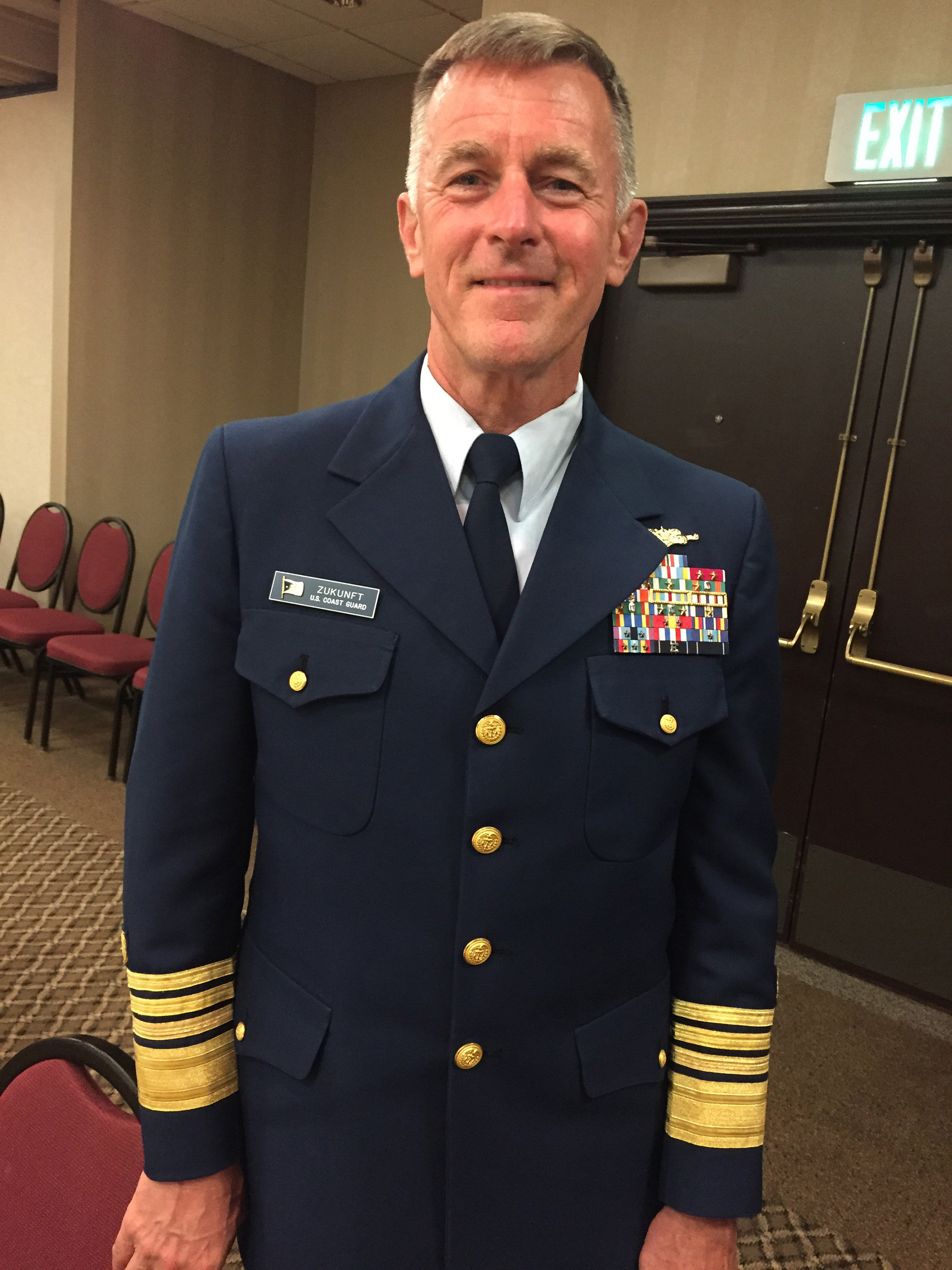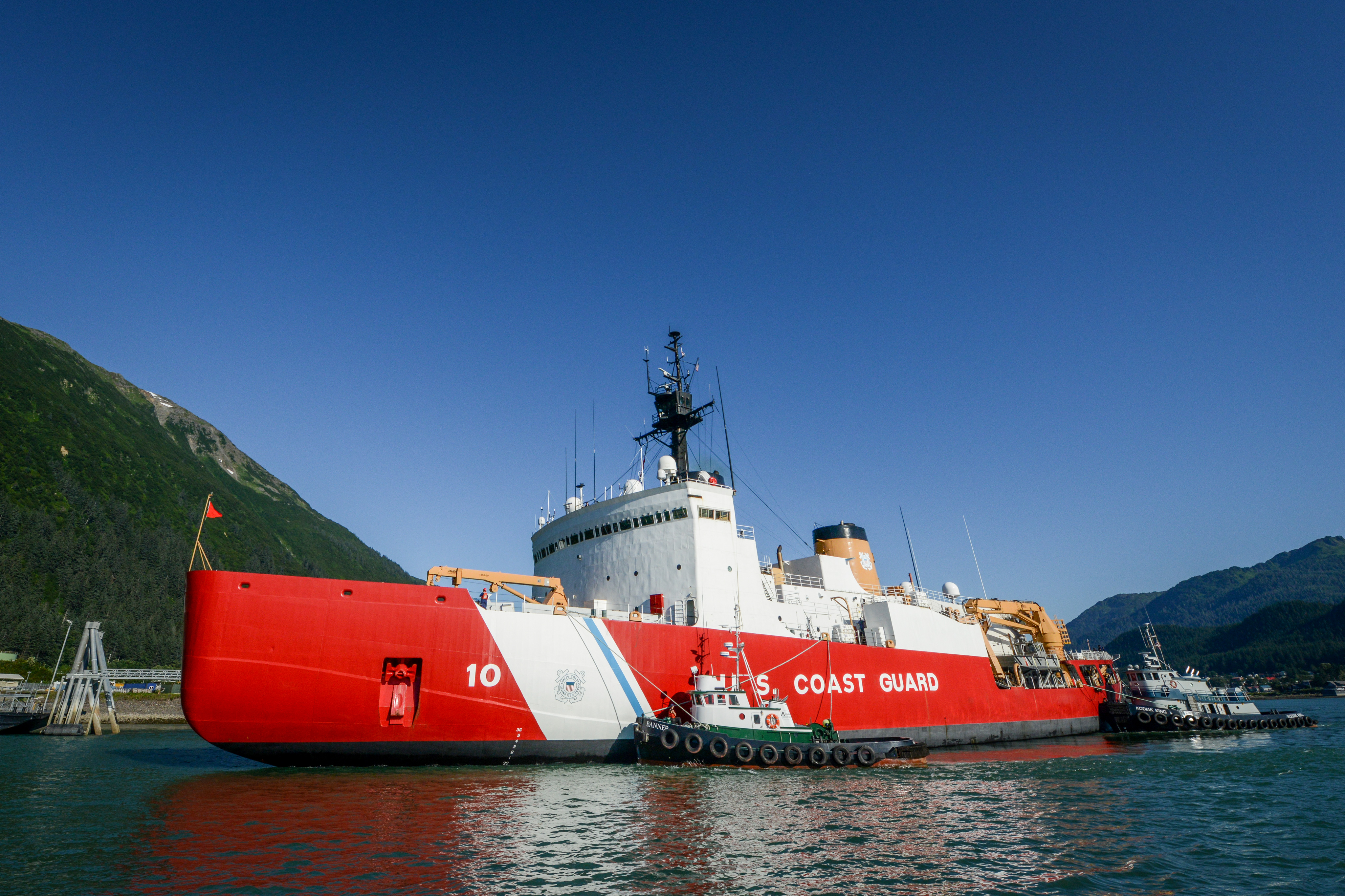Commandant says US Coast Guard modernizing at fastest pace in decades
SEATTLE — Traveling to the Pacific Northwest last month, Coast Guard Commandant Paul Zukunft checked out the Bluebell, a 71-year-old Coast Guard tender that continues to service navigation aids along the Willamette, Columbia and Snake rivers.
Keeping the Bluebell on the water fits into a timeworn Coast Guard ethic — forged by tight budgets and an aging fleet — of doing more with less. But Zukunft says the Coast Guard is now in transition, gaining new vessels and aircraft at a historic pace.
“We are no longer the Rodney Dangerfield that gets no respect,” Zukunft told participants at a September harbor-safety conference in Portland. “We are modernizing like no time ever in my 39-plus years of active duty service.”

The Coast Guard is contracting for new cutters, patrol boats, fixed-wing aircraft and helicopters, as well as improving home ports and airfields.
In the years ahead, that spending could bring new vessels to Washington, where the Coast Guard has a major presence and an annual operating budget that exceeds $271 million. The mission of the Washington-based fleet ranges from rescuing recreational boaters to fisheries enforcement off Alaska and drug interdictions along the coast of Central America.
The revamping of the Coast Guard fleet has long been in the making, and includes a troubled history of contract management that more than a decade ago was outsourced to private industry. Known as Deepwater, the program was saddled with waste, poor design and other problems.
[Invoking Star Trek, U.S. official calls for shared icebreaker operations]
In an interview with The Seattle Times, Zukunft said the Deepwater “kidney stone” has passed and the Coast Guard has moved more contracting expertise in-house.
“We are delivering ships, with very few discrepancies, on time and on budget,” said Zukunft, who became commandant in 2014.
Still, there are problems as documented in a congressional Government Accountability Office report released in January. The report said the Coast Guard will have to pay $202 million for major design changes and retrofits to fix problems encountered in the testing of what will be a fleet of new national-security cutters.

The single most expensive acquisition on the Coast Guard’s list is a heavy polar icebreaker. The Senate Appropriations Committee earlier this year approved $1 billion for the ship, and final congressional funding could come by the year’s end. The vessel might be ready in a decade or less.
The progress in Congress reflects broad bipartisan support for more icebreakers in an era when climate change is opening up Arctic waters to tourism, cargo ships and other activity. The Department of Homeland Security in 2013 called for a fleet of six Coast Guard icebreakers, triple the number that are currently operational.
“The first large cruise ship transited the Arctic this year. We need a plan to ensure that the Coast Guard has the … tools to operate safety and effectively in the Arctic and Antarctic,” said Sen. Maria Cantwell, D-Wash., who has pushed for years for new icebreaker construction.
But there has been plenty of debate about what that plan for more icebreakers should look like. And there are ongoing questions about how to get through the next decade when the Coast Guard has few reliable icebreakers while a resurgent Russia maintains some 40 such vessels with more under construction.
[Young questions how the US will manage without an icebreaker]
Seattle has a big stake in how the icebreaker decisions play out.
The city is home port for all three of the Coast Guard’s current icebreakers, and construction of additional vessels could boost shipyards in the Puget Sound region should they secure contracts.
The three Seattle-based ships are the Healy, which can continuously break ice up to 4 feet thick, and two 1970s-era heavy icebreakers — the moribund Polar Sea, which has been idle since a 2010 crankcase explosion, and its sister ship, Polar Star, which in 2012 underwent a $56 million renovation to keep it operational for another decade.
The Polar Sea and Polar Star were designed to continuously break ice up to 6 feet thick.
This past year, the difficulty in relying on the Polar Star was starkly apparent as the vessel broke down twice during annual Antarctica duty clearing ice for resupply of the McMurdo Station for scientific research.
In December, an electrician’s mate used a surfboard-repair kit to fix a generator after it shorted out, and in January crews had to perform a difficult 36-hour welding job to repair a bracket that supported the drive shaft.
[Climb aboard America’s biggest icebreaker]
One interim option would bring the Polar Sea back into temporary service. A Coast Guard report on the cost of that restoration is expected by the end of the year.
Zukunft said the Polar Sea’s hull is sound but made from a type of steel no longer manufactured in the United States. Restoring the vessel to service would require cutting holes in the side of the ship and pulling out a lot of the interior equipment to rebuild the propulsion and other systems. That would involve considerable risk of a potential hull failure.
Zukunft said his feelings about putting the Polar Sea back to work are “guarded, at best. … If you try to refurbish 40-year-old engines, how much service life do you get out of that, recognizing that at some point you are going to have to modernize — so that has only delayed the inevitable.”
Some experts suggest the Coast Guard consider leasing icebreakers from another country, or industry, to help make it through the next decade or so.
“There doesn’t have to be an all-or-nothing resolution to this, and I think we need some options,” said David Van Slyke, a Syracuse University dean with a background in contracting who wrote an August opinion piece in Politico that criticized the icebreaker plan as too focused on securing the $1 billion for the new ship.
Zukunft said the only country that would have anything close to excess icebreaker capacity is Russia, and “we are not going to lease an icebreaker from Russia while we have sanctions against Russia at the same time.”
The home port for new icebreaker also remains uncertain.
Zukunft said it “would be premature to speculate” whether a new vessel would be based in Seattle
Even as the Coast Guard modernizes its fleet, the agency faces a long-running struggle to gain congressional support for increases in operating budgets.
Cantwell notes there are more female cadets with the Coast Guard than in any other military academy, yet the Coast Guard can’t match the child care and other support services offered by other military branches. The senator said she worked with Zukunft earlier this year to pass legislation that doubles paid maternity leave for Coast Guard members, and also is pushing for expanding access to child care.